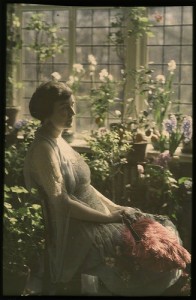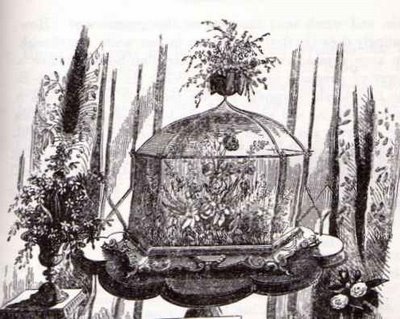 When it comes to humanizing a small space that isn’t one’s own, it doesn’t take long to realize the difference a houseplant, or two houseplants, can make. The elegant green leaves, so smart against worn, bedsit furniture and cigarette-burned carpets; the fresher air despite poor ventilation and the presence of cooking; the morale-boosting sense of growth and change that come as a plant develops and changes; all these are good and necessary things.
When it comes to humanizing a small space that isn’t one’s own, it doesn’t take long to realize the difference a houseplant, or two houseplants, can make. The elegant green leaves, so smart against worn, bedsit furniture and cigarette-burned carpets; the fresher air despite poor ventilation and the presence of cooking; the morale-boosting sense of growth and change that come as a plant develops and changes; all these are good and necessary things.
But not everyone is able to take care of plants as well as they would like. Incompetence, forgetfulness, irregular work patterns and stress are human traits that we all share to some extent, and all of them militate against the health of our plants.
The Victorians, houseplant pioneers, had all of these failings and, what was worse, had them in the bad air and tainted water of nineteenth century cities. It wasn’t just coal smoke: factories, often situated not just close to but in the middle of residential areas, could pump out more or less any nuisance they wanted. As late as the 1930s, J.B.Priestley found himself scarcely able to breathe in one village, so strong was the ammonia hanging in the atmosphere. Little wonder that the Victorians developed Wardian cases to protect their plants from the worst of it.
But it did mean that the Victorians learned, early on, which plants were the hardiest, best able to cope with difficult conditions. And it’s these plants that still, today, are the best for houseplant owners who perhaps do not trust themselves with the care of anything too sensitive to its environment. According to D.G.Hessayon,
“Palms and hardy ferns dominated the scene with Aspidistra, Sansevieria, Hedera, Plectranthus etc. providing a leafy accompaniment. Plant holders were an important feature – jardinieres, tiered shelves, hanging baskets etc. became large and more ornate as the century advanced. So did the Wardian cases…”
We’ll look at these unkillable Victorian plants in Hessayon’s own order:
Aspidistra
Aspidistra are now known, of course, because Garreteer hero George Orwell made them the symbol of smug airless suburbia in Keep the Aspidistra Flying. But they’re also known as the Cast Iron Plant – and their resilience matches that of the great Victorian decorative metal. Just keep them out of direct sunlight, don’t overwater (you can get away with underwatering for long periods however) and avoid repotting them too often.
Sansevieria
If anything, Sansevieria are even harder to put down than Aspidistra. Perhaps this indefatigability is what lies behind Sansevieria’s alternative name, Mother-in-Law’s Tongue.. in any event, the stately leaves of Sansevieria can only really be stopped by freezing temperatures and heavy overwatering in winter. A plant to see you through the hard years.
Hedera
Hedera are ivy. That doesn’t have to mean a climbing plant, as most true ivies can also be cultivated as trailers, and as such are useful fillers for the spaces between other plants. If you do opt to allow your hedera to climb, then be aware that some types have suckers that are well capable of fastening onto your wallpaper, and if there are landlord issues here, you might want to invest in supports instead. Do bear in mind also that hedera cope less well with dry centrally-heated air and that regular misting of the leaves may be necessary if your space is warmed with radiators.
Palms
The most famously indestructable palms are the kentia, of which the British favourite is howea forsteriana. Although these are traditional “palm court” palms, they probably won’t grow beyond about two feet in height and so are safe choices for small rooms. So long as they aren’t left forever in direct sunshine and so long as your room isn’t of Saharan dryness, you won’t go far wrong.
Plectranthus
Plectranthus are also known as Swedish Ivy and are another series of plants well able to cope with periods of underwatering and dry air. It’s worth pinching out the stems occasionally if you know what you are doing, and they might even flower from time to time.
Dracaenas
Popular in Victorian times, Draceanas are coming back into fashion and are now perhaps the most popular large foliage plant. Look for Draceana Marginata, a type well able to cope with dry conditions, cold, lack of light and those times when you forget to water it. A cutting from a Draceana can be planted in moist potting compost and will grow as a Ti Tree.
